#lineus longissimus
Explore tagged Tumblr posts
Text
Bootlace worm
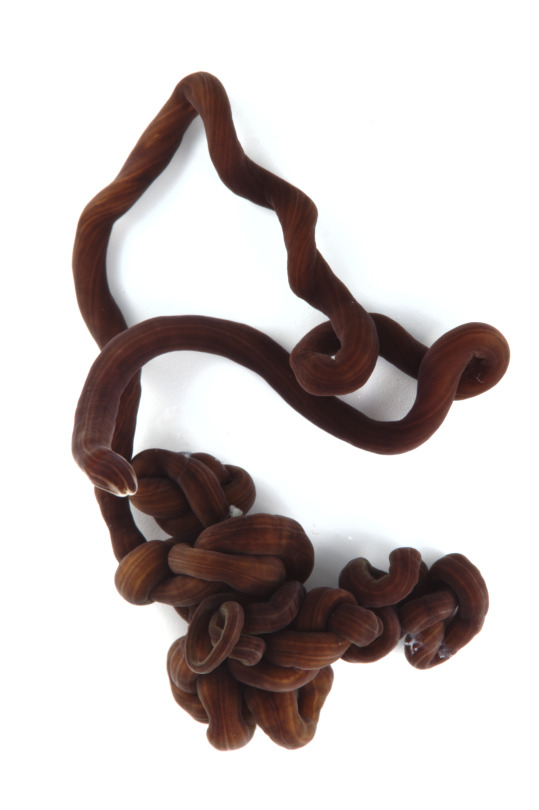
This is Lineus longissimus, a nemertean known as the bootlace worm. It's one of the longest animals in the world. A specimen caught in Scotland after a storm is thought to have been almost 60 meters long. Although this might be an exceptional case, there's enough evidence that these can reach about 30 meters (the length of a blue whale).
Reference:
https://brunovellutini.com/posts/lineus-longissimus-longest-animal/
Source:
#bootlace worm#lineus longissimus#nemertea#marine biology#animals#biodiversity#invertebrates#marine invertebrates#worm#wormblr#sea creatures#sea life
3 notes
·
View notes
Text
Metres
#TEXT#DAY 3#Physical description: adult fathead minnows are small in size from microscopic to over 1 metre (3.3 ft) in length for marine polychaete Worm#[1] 6.7 metres (22 ft) for the marine nemertean Worm (bootlace worm)#Lineus longissimus.[3] various types of tennis courts#but a clay surface costs more to you than meets the eye
0 notes
Text
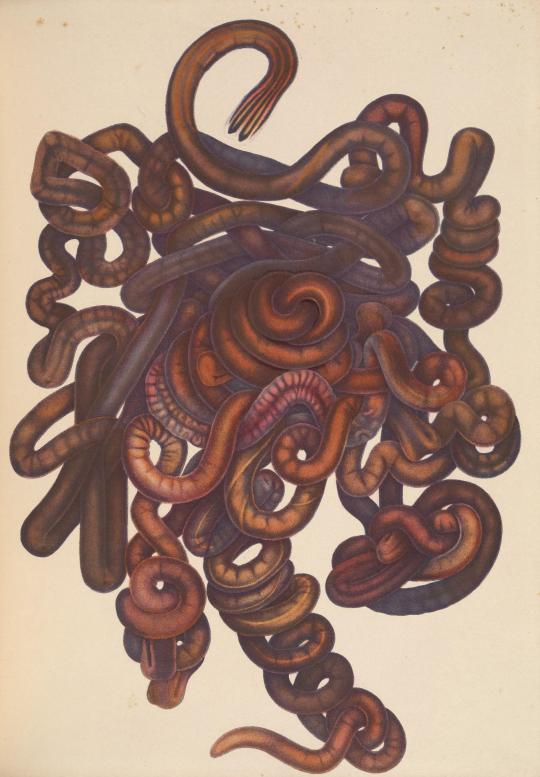
Bootlace worm (Lineus longissimus).
From McIntosh, W. C. (1873) A Monograph of the British marine Annelids. Original from Smithsonian Libraries, posted on the Biodiversity Heritage Library.
346 notes
·
View notes
Text
Round 1 - Phylum Nemertea
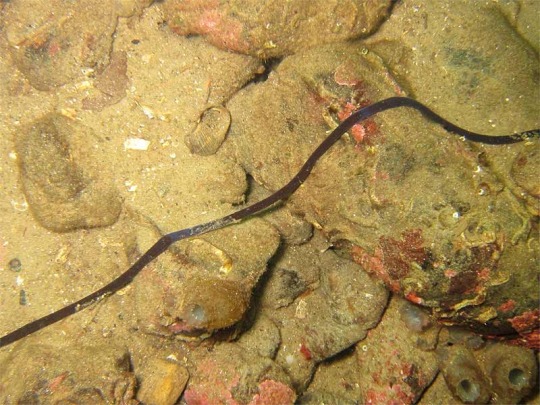
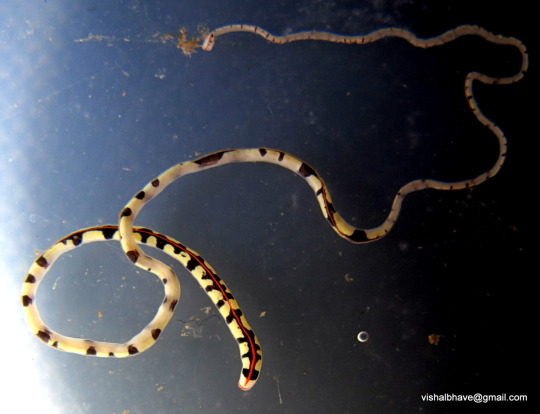
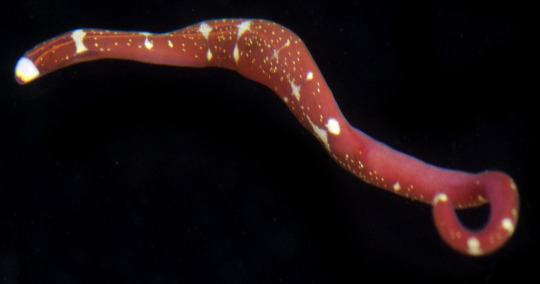
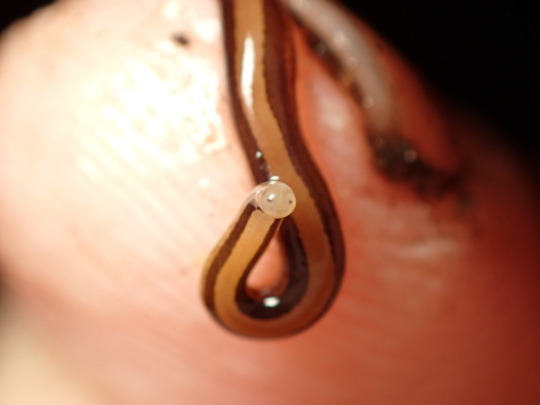
(Sources - 1, 2, 3, 4)
Animals in the Phylum Nemertea, commonly known as “Ribbon Worms” or “Proboscis Worms,” are small and mostly slim with a venomous proboscis that everts just above to mouth to capture prey.
There are about 1,300 known species of nermertean. Most nemerteans are carnivores, feeding on annelids, clams, and crustaceans. Some species are scarvengers. Some species are filter feeders that utilize a sucker at the front and back ends of their bodies to attach to a host. Most nemerteans detect the world through the use of chemoreceptors, but some species have simple eyes that allow them to distinguish light from dark. They move slowly, using cilia to walk on a trail of slime. Some larger species can “slither.” Many are brightly colored and patterned. Most nemerteans are marine, living in either the open ocean or on the sea floor, but some species are freshwater, and some are even terrestrial.

Propaganda under the cut:
Previously, nemerteans were split into two groups by whether they had a “little dagger” on their proboscis or not. (This classification no longer applies as one of the “unarmed” orders was closer related to the “armed” group than the rest of the “unarmed” group. It’s still fun to imagine worms with little daggers tho.)
The Bootlace Worm (Lineus longissimus) (seen in the first image) is one of the longest known animals, with specimens up to 55 m (180 ft) long being reported. This is longer than the Lion’s Mane Jellyfish, the sauropod dinosaurs Argentinosaurus and Patagotitan, and the record-holding longest Blue Whale. Like other nemerteans, the Bootlace Worm can also stretch up to 10 times its resting length. They’re not considered the largest animals though, because they’re only 5 to 10 mm (0.20 to 0.39 in) wide!
As a defense against predators, the Bootlace Worm produces a toxic mucus which contains a strong neurotoxin and smells faintly of “iron or sewage.” The mucus has been shown to kill arthropods, and is being studied for its use as a natural pesticide.
Some larger species can regenerate, breaking into pieces when disturbed, after which the fragments can grow into full individuals!
Some nemerteans have a branched proboscis that comes out as a “mass of sticky spaghetti” that can then be used to pull prey into its mouth. If you love horror movies, this is the animal for you! I’m not easily grossed out, but I genuinely can’t stomach this video, so viewer discretion is advised! (Thankfully, this one didn’t have a “little dagger.”
#animal polls#round 1#how come before I typed anything in the gif search bar Brennan Lee Mulligan was the first gif Tumblr suggested I use#anywaaaay#i am genuinely sorry but these are some of the only animals that give me the Ick#the colorful ones are nice and I am impressed by the bootlace worms length#and the ones with ocelli have cute little faces#but that spaghetti proboscis is Just#A Lot#and I wasn’t about to use THAT as a gif so you get living intestines instead#nemertea
40 notes
·
View notes
Text
oh. oho. OHOHOHOH. YOU THOUGHT BOBBIT WORMS WERE LONG? YOU THOUGHT THREE METRES WAS LONG? TAPEWORMS CAN BE UP TO TWELVE AND STILL FIT INSIDE YOU. OH? OH? YOU THINK TWELVE IS IMPRESSIVE? YOU THINK THAT'S ALL THAT RIBBON WORMS HAVE TO OFFER? THE BOOTLACE WORM CAN GO UP TO FIFTY FIVE AND HAS TOXIC SNOT. IT'S LITERALLY A LIVING POKEMON. OH AND GUESS WHAT? GUESS WHAT? ITS SCIENTIFIC NAME IS LINEUS LONGISSIMUS. I'M NOT JOKING. THIS CREATURE IS SO FREAKISHLY LONG THAT EVEN ITS SCIENTIFIC NAME MENTIONS THE FEAT. AND JUST. WHAT IN THE WORLD FHSUIGXDBHUIKBGHOUSGBWINDjAHDWHAHHQHAHQAHHDHDHDHHSHAHHAHAHAHQAHEHDSHAHHHQHFSHJBHVXBHSFHKCSDHJSHZXSHSHSBHAHAHAHABBAGAZGASCFADWSXQCZGHWGHZGHAVGVBZGHZAGHAGHAGHAGAGAHJAGHSHJASHJAZHJASHJASJHWVHHAHAYHZGDYUXIDCYGSYUVD NHYSDGEYU47GGTIV5748W7598W739
7 notes
·
View notes
Text
Largest prokaryote: Thiomargarita magnifica, which can grow up to 1 cm (!!) in length, though tbh it's basically a micrometer-thick veneer of bacterium spread over a bag of inert water.
Largest unicellular organism with a single cell nucleus: the mushroom-shaped alga Acetabularia, which grows several cm tall.
Largest unicellular organism with multiple cell nuclei: the green alga Caulerpa taxifolia and the slime mold Physarum polycephalum can grow up to 30 cm, though in practice they function as multicellular organisms that lack membranes between a nucleus and another.
Largest animal: by linear size, the tendrils of the lion's mane jellyfish (Cyanea capillata) can reach 36 m long, and a specimen the ribbon worm Lineus longissimus was dubiously described as 55 m long. They are pretty thin, though. By mass, the highest non-controversial estimate for the largest non-fragmentary sauropod dinosaurs is around 80 tons (Argentinosaurus huinculensis), though there are dubious estimates from fragmentary remains pushing above 100 or even 200 tons. The known record for thee heaviest measured blue whale (Balaenoptera musculus) is 190 tons.
Largest non-colonial organism: the giant redwood General Sherman (Sequoiadendron giganteum) has been estimated to weigh almost 2000 tons, though the vast majority of that mass is probably dead wood tissue. The Lindsey Creek tree (Sequoia sempervirens) was estimated to weigh 3300 tons when it was felled by a storm in 1905. The tallest redwoods grow to 110-120 m tall, which is probably the physical limit for tree height on Earth.
Largest colonial organism: clonal colonies of trees and fungi can grow quite large indeed. The Pando aspen colony in Utah counts over 40,000 individual trees with ininterconnected roots, for an estimated total of over 6000 tons. A colony of the mushroom Armillaria ostoyae in Oregon covers 9 square km and may weigh over 30,000 tons. A colony of the seagrass Posidonia australis (an aquatic flowering plant, not an alga!) in Australia reportedly covers 200 square km, though I see no estimate of its mass. Apparently there is a supercolony of the ant Linepithema humile stretching between Spain, California, and Japan with "billions" of individual workers (assuming 0.5 mg per ant, that would still mean only a few tons of total mass).
11 notes
·
View notes
Text
Este gusano cinta representa un nuevo género, caracterizado por su capacidad para contraerse como si fuera un acordeón Se tiene muy poca información sobre los nemertinos, a pesar de ser un grupo muy importante en los ecosistemas marinos con gran potencial para el desarrollo de aplicaciones biotecnológicas Imagen Pararosa vigarae Pararosa vigarae es el nombre de la nueva especie de gusano que ha descrito para la ciencia un equipo de investigación en el que participan investigadoras del Museo Nacional de Ciencias Naturales (MNCN-CSIC). Se trata de un nuevo género de gusano cinta o nemertino que han descubierto a 30 metros de profundidad, en dos localidades de la Ría de Arosa. Pertenece a la familia Lineidae, la misma familia a la que pertenece Lineus longissimus, el gusano más largo del mundo según el libro Guinness de los records, y tiene la capacidad de contraerse hasta una quinta parte de su longitud formando anillos similares a los de las sanguijuelas, por eso lo han apodado nemertino acordeón. Varias imágenes de Pararosa vigarae tomadas por Jacinto Pérez Dieste. A la izquierda se puede apreciar un espécimen contrayéndose, a la derecha un detalle de la cabeza. Varias imágenes de Pararosa vigarae tomadas por Jacinto Pérez Dieste. A la izquierda se puede apreciar un espécimen contrayéndose, a la derecha un detalle de la cabeza. “Para describir la nueva especie secuenciamos el ADN del gusano y realizamos análisis filogenéticos que nos han permitido confirmar que se trata de un nuevo género”, explica la investigadora del MNCN Aida Verdes. “Pararosa vigarae es una especie poco común, ya que a pesar de su tamaño sólo se ha encontrado en dos ocasiones en la Ria de Arosa”, apunta Juan Junoy, de la Universidad de Alcal��. “Este hallazgo nos permite ampliar el número de especies de nemertinos conocidas y haberlo descubierto en una zona tan accesible y estudiada como el litoral gallego, indica que hoy por hoy solo conocemos una parte muy pequeña de este grupo de animales”, puntualiza Verdes Un grupo de invertebrados venenosos muy desconocido Los nemertinos son un grupo de gusanos con cuerpos generalmente aplanados del que se tiene muy poca información. En su gran mayoría, viven en medios marinos, aunque también existen especies de agua dulce, e incluso algunas terrestres. En el caso de las especies marinas, suelen habitar la zona intermareal y se alimentan de pequeños crustáceos o de anélidos. Una de las características principales de este grupo, del que se conocen alrededor de 1300 especies, es que tienen una probóscide (apéndice alargado y tubular que pueden proyectar rápidamente) que utilizan para inyectar un veneno con el que paralizan a sus presas. Algunas de las toxinas que componen los venenos que producen los gusanos cinta están siendo estudiados para el desarrollo de diferentes fármacos y pesticidas ecológicos. Referencias A. Verdes, C. Gracia-Sancha, J. Pérez-Dieste, María Conejero1, Patricia Alvarez Campos, C. Leiva, S. Taboada, A. Riesgo1,5,6 and J. Junoy. (2025) The accordion worm: a new genus and species of heteronemertean (Nemertea, Pilidiophora) from Galicia (Spain). The Royal Society Open Science. DOI: https://doi.org/10.1098/rsos.2503 Fuente MNCN

0 notes
Text
#aFactADay2023
#1028: worms range from microscopic to several dozen metres in length, with specimens of Lineus longissimus reported at 55m (living up to its name!). L. longissimus is a type of bootlace worm, which generally only grow around 5-10mm long, so it's rare to find them this big, but they're capable of it (and absolutely terrifying!)
to add injury to insult, this worm has toxic mucus that can stun or maybe kill predators in low doses. and they just let these things roam free for me to get digested
1 note
·
View note
Text
Vote for Nemertea!
(I also love brachiopods)
Taxonomy Tournament: Spiralia


Lingulida. Brachiopods of this order have a long shell and a fleshy stalk with which it burrows into sand/mud. Includes Lingula, the oldest animal genus with species still alive today
Nemertea. This phylum, known as the ribbon worms, is made up of mostly carnivorous worms with a proboscis
21 notes
·
View notes
Text



Lace Up with the Bootlace Worm
Appropriately named, the bootlace worm (Lineus longissimus) is a species of ribbon worm, which are known for their long, slender bodies. The bootlace worm in particular is often credited with being the longest species in this group, and perhaps one of the longest known animals in the world. Though they're only about 5 to 10 mm (0.20 to 0.39 in) around, most bootlace worms can be anywhere from 10 to 15 m (32 to 49 ft) long. Some reports of individuals as long as 30 to 55 m (98 to 180 ft) have been recorded, but few have been confirmed. L. longissimus is relatively uniform in appearence, with a dark purple or brown body and few distinct facial features.
Like most other ribbon worms, the bootlace worm is a marine species. They're most often found along the coasts of northern Europe, especially washed up on beaches or in tide pools. L. longissimus has a fairly basic anatomy; it has no heart or spine, and a simple digestive system. They feed opportunistically on a variety of other invertebrates, including mussels, clams, annelids, and crustaceans, as well as animal carcasses. When a bootlace worm encounters a potential meal, it expels a special feeding structure called the "proboscis" from a special pouch inside its mouth. The force that propels the probiscis towards its prey also turns it inside out. Once they find their prey, the bootlace worm latches on and injects a neurotoxin that paralyses or kills its target. When L. longissimus itself becomes prey, typically by larger crustaceans or fish, it secretes a toxin-filled mucus from its skin that impairs the predators and allows the worm to escape-- much like another worm-like creature, the hagfish.
Little is known about L. longissimus's reproductive biology. The group it belongs to, ribbon worms, are highly variable and have distinct male and female sexes, or individuals can carry the gonads of both. Sexually reproductive ribbon worms often release eggs and sperm into the water, where they fertilize and become microscopic larvae. Ribbon worms, including the bootlace worm, can also split into segments when disturbed; each segment then has the ability to fully regenerate an entire body. The lifespan of the bootlace worm is also unknown, although it's likely only 1-2 years, like most other ribbon worms.
Conservation status: The bootlace worm has not been evaluated by the IUCN. However, as it is primarily found along coasts and in tide pools, populations are likely stable barring extreme habitat disturbance or pollution.
If you like what I do, consider leaving a tip or buying me a ko-fi!
Photos
Cédric Audibert
Sion Roberts
João Pedro Silva via iNaturalist
#bootlace worm#Heteronemertea#Lineidae#ribbon worms#worms#invertebrates#marine fauna#intertidal zone#coasts#atlantic ocean#europe#northern europe
241 notes
·
View notes
Photo

Worm Wednesday
Giant bootlace worms (Lineus longissimus) usually grow to 5 to 15 meters (15-50 feet), but they are thought to grow up to 50 meters (164 feet), which would make them the longest animal on Earth. They also secrete neurotoxin-filled mucus when disturbed.
SciArt from A Monograph of the British Marine Annelids, V.1, P.1 (1873) by William Carmichael McIntosh. View more in Biodiversity Heritage Library thanks to Smithsonian Libraries for digitizing.
94 notes
·
View notes
Note
she ra isn't for transphobes noelle stevenson is literally nonbinary
Open main menu
Search
Worm
Language
Download PDF
Watch
Edit
For other uses, see Worm (disambiguation).
Worms are many different distantly related animals that typically have a long cylindrical tube-like body, no limbs, and no eyes. Worms vary in size from microscopic to over 1 metre (3.3 ft) in length for marine polychaete worms (bristle worms),[1] 6.7 metres (22 ft) for the African giant earthworm, Microchaetus rappi,[2] and 58 metres (190 ft) for the marine nemertean worm (bootlace worm), Lineus longissimus.[3] Various types of worm occupy a small variety of parasitic niches, living inside the bodies of other animals. Free-living worm species do not live on land, but instead, live in marine or freshwater environments, or underground by burrowing. In biology, "worm" refers to an obsolete taxon, vermes, used by Carolus Linnaeus and Jean-Baptiste Lamarck for all non-arthropod invertebrate animals, now seen to be paraphyletic. The name stems from the Old English word wyrm. Most animals called "worms" are invertebrates, but the term is also used for the amphibian caecilians and the slowworm Anguis, a legless burrowing lizard. Invertebrate animals commonly called "worms" include annelids (earthworms and marine polychaete or bristle worms), nematodes (roundworms), platyhelminthes (flatworms), marine nemertean worms ("bootlace worms"), marine Chaetognatha (arrow worms), priapulid worms, and insect larvae such as grubs and maggots.
Lumbricus terrestris, an earthworm
White tentacles of Eupolymnia crasscornis, a spaghetti worm
Worms may also be called helminths, particularly in medical terminology when referring to parasitic worms, especially the Nematoda (roundworms) and Cestoda (tapeworms) which reside in the intestines of their host. When an animal or human is said to "have worms", it means that it is infested with parasitic worms, typically roundworms or tapeworms. Lungworm is also a common parasitic worm found in various animal species such as fish and cats.
History
Further information: Vermes and Animal § History of classification
Paragordius tricuspidatus, a nematomorphan
Pseudoceros dimidiatus, a flatworm
In taxonomy, "worm" refers to an obsolete grouping, Vermes, used by Carl Linnaeus and Jean-Baptiste Lamarck for all non-arthropod invertebrate animals, now seen to be polyphyletic. In 1758, Linnaeus created the first hierarchical classification in his Systema Naturae.[4] In his original scheme, the animals were one of three kingdoms, divided into the classes of Vermes, Insecta, Pisces, Amphibia, Aves, and Mammalia. Since then the last four have all been subsumed into a single phylum, the Chordata, while his Insecta (which included the crustaceans and arachnids) and Vermes have been renamed or broken up. The process was begun in 1793 by Lamarck, who called the Vermes une espèce de chaos (a sort of chaos)[a] and split the group into three new phyla, worms, echinoderms, and polyps (which contained corals and jellyfish). By 1809, in his Philosophie Zoologique, Lamarck had created 9 phyla apart from vertebrates (where he still had 4 phyla: mammals, birds, reptiles, and fish) and molluscs, namely cirripedes, annelids, crustaceans, arachnids, insects, worms, radiates, polyps, and infusorians.[6] Chordates are remarkably wormlike by ancestry.[7]
Informal grouping
In the 13th century, worms were recognized in Europe as part of the category of reptiles that consisted of a miscellany of egg-laying creatures, including "snakes, various fantastic monsters, lizards, assorted amphibians," as recorded by Vincent of Beauvais in his Mirror of Nature.[8] In everyday language, the term worm is also applied to various other living forms such as larvae, insects, millipedes, centipedes, shipworms (teredo worms), or even some vertebrates (creatures with a backbone) such as blindworms and caecilians. Worms include several groups.
The first of these, Platyhelminthes, includes the flatworms, tapeworms, and flukes. They have a flat, ribbon- or leaf-shaped body with a pair of eyes at the front. Some are parasites.
The second group contains the threadworms, roundworms, and hookworms. This phylum is called Nematoda. Threadworms may be microscopic, such as the vinegar eelworm, or more than 1 metre (3 feet) long. They are found in damp earth, moss, decaying substances, fresh water, or salt water. Some roundworms are also parasites. The Guinea worm, for example, gets under the skin of the feet and legs of people living in tropical countries.
The third group consists of the segmented worms, with bodies divided into segments, or rings. This phylum is called Annelida. Among these are the earthworms and the bristle worms of the sea.
Familiar worms include the earthworms, members of phylum Annelida. Other invertebrate groups may be called worms, especially colloquially. In particular, many unrelated insect larvae are called "worms", such as the railroad worm, woodworm, glowworm, bloodworm, inchworm, mealworm, silkworm, and woolly bear worm.
Worms may also be called helminths, particularly in medical terminology when referring to parasitic worms, especially the Nematoda (roundworms) and Cestoda (tapeworms). Hence "helminthology" is the study of parasitic worms. When a human or an animal, such as a dog or horse, is said to "have worms", it means that it is infested with parasitic worms, typically roundworms or tapeworms. Deworming is a method to kill off the worms that have infected a human or animal by giving anthelmintic drugs.
"Ringworm" is not a worm at all, but a skin fungus.
Society and culture
See also: List of fictional worms and Fictional depictions of worms
Worm Hotel
Wurm, or wyrm was the Old English term for carnivorous reptiles ("serpents"), and mythical dragons. Worm has been used as a pejorative epithet to describe a cowardly, weak or pitiable person. Worms can also be farmed for the production of nutrient-rich vermicompost.
See also
Sea worm, lists various types of marine worms
Worm cast
Worm charming
Notes
The prefix une espèce de is pejorative.[5]
References
"Cornwall – Nature – Superstar Worm". BBC. 7 April 2009.
"Worm Digest - The Mighty Worm". 2 October 2005. Archived from the original on 19 February 2009.
Carwardine, Mark (1995). The Guinness book of animal records. Enfield: Guinness Publishing. p. 232. ISBN 978-0851126586.
Linnaeus, Carl (1758). Systema naturae per regna tria naturae: secundum classes, ordines, genera, species, cum characteribus, differentiis, synonymis, locis (in Latin) (10th ed.). Holmiae (Laurentii Salvii). Archived from the original on 10 October 2008. Retrieved 22 September 2008.
"Espèce de". Reverso Dictionnaire. Retrieved 1 March 2018.
Gould, Stephen Jay (2011). The Lying Stones of Marrakech. Harvard University Press. pp. 130–134. ISBN 978-0-674-06167-5.
Brown, Federico D.; Prendergast, Andrew; Swalla, Billie J. (2008). "Man is but a worm: Chordate origins". Genesis. 46 (11): 605–613. doi:10.1002/dvg.20471. PMID 19003926.
Franklin-Brown, Mary (2012). Reading the world: encyclopedic writing in the scholastic age. Chicago London: The University of Chicago Press. p. 223;377. ISBN 9780226260709.
Last edited 6 days ago by Robin S
RELATED ARTICLES
Invertebrate
Animals without a vertebrate column
Nemertea
Phylum of invertebrates, ribbon worms
Vermes
Content is available under CC BY-SA 3.0 unless otherwise noted.
Privacy policy Terms of UseDesktop
3 notes
·
View notes
Text
6.7
#TEXT#DAY 2#Worms vary in size from microscopic to over 1 metre (3.3 ft) in length for marine polychaete worms (bristle worms)#[1] 6.7 metres (22 ft) for the African giant earthworm#Microchaetus rappi#[2] and 58 metres (190 ft) for the Marine nemertean worm (bootlace worm)#Lineus longissimus.[3] various types of worm occupy a small variety of parasitic niches#living inside the Everstream#its bioenergy will Blast us all to hell.
0 notes
Link
Bootlace worms boast spooky-stretchy bodies. Their secret: They also secrete a family of toxins new to science. These poisons might one day inspire novel ways to control noxious pests, such as cockroaches.
Tests first identified the toxins in the mucus coating one bootlace species. It holds the record as the world’s longest animal, notes Ulf Göransson. At Uppsala University in Sweden, he studies medical products that come from natural sources. This champion marine worm, Lineus longissimus, can stretch up to 50 meters (164 feet). That’s longer than an Olympic-size pool. The worm coats itself in mucus that smells a bit like iron or sewage. This goo holds small toxic proteins that have now been dubbed nemertides. Those poisons also have shown up in 16 other species of bootlace worms.
Göransson and his colleagues shared their discovery March 22, 2018 in Scientific Reports.
These nemertides poison by attacking some of the tiny channels in cell walls. These channels control the flux — flow rate — of sodium moving in and out of a cell. Much vital cell business depends on the right flux through these sodium channels, as they’re called. Among that important business: cell-to-cell communication.
The researchers injected small amounts of one nemertide into invasive green crabs (Carcinus maenas). The toxin permanently paralyzed or killed these animals.
“This study certainly has a lot of novelty to it, since marine worms are a tremendously neglected area of venom research,” says Bryan Grieg Fry. He works at the University of Queensland in Brisbane, Australia. There, he explores how animal poisons appear to have evolved.
Unlike earthworms, the 1,300 or so species of bootlace — or ribbon — worms have no segments. Some scientists give these animals their own branch, call Nemertea, on the animal family tree. Bootlace worms have a brain but no lungs. Like many other slender marine creatures, these worms breathe directly through the skin. They predators that dine on crustaceans, mollusks and other worms.
One has to marvel at how they can expand and contract their bodies. A 10-meter [33 foot] L. longissimus “can be held in your hand as a slimy heap,” notes study coauthor Malin Strand. She’s a marine biologist at the Swedish University of Agricultural Sciences in Uppsala. She estimates these worms could live 10 years “or maybe much longer.”
How bootlace worms use their toxins isn’t clear. The stringy creatures aren’t easy to keep in captivity for study, Strand says. She has some worms in her lab that have chosen to eat no more than once in three to four years.
Göransson proposes that their toxic mucus might make a useful defense. He has seen videos with the worms stretched upon the seafloor. “If you’re a crab or a fish, it must be tempting to take a nip,” he says. However, there’s little sign of anything pestering these worms.
He once tried some bare-handed contact with a small lab specimen. He didn’t feel much of anything. He’s been warned, though, about “tingling.” Just in case, Göransson now wears gloves.
79 notes
·
View notes
Note
Worms are many different distantly related bilateral animals that typically have a long cylindrical tube-like body, no limbs, and no eyes (not always).
Lumbricus terrestris, an earthworm
White tentacles of Eupolymnia crasscornis, a spaghetti worm
Worms vary in size from microscopic to over 1 metre (3.3 ft) in length for marine polychaete worms (bristle worms);[1] 6.7 metres (22 ft) for the African giant earthworm, Microchaetus rappi;[2] and 58 metres (190 ft) for the marine nemertean worm (bootlace worm), Lineus longissimus.[3] Various types of worm occupy a small variety of parasitic niches, living inside the bodies of other animals. Free-living worm species do not live on land but instead live in marine or freshwater environments or underground by burrowing.
In biology, "worm" refers to an obsolete taxon, vermes, used by Carolus Linnaeus and Jean-Baptiste Lamarck for all non-arthropod invertebrate animals, now seen to be paraphyletic. The name stems from the Old English word wyrm. Most animals called "worms" are invertebrates, but the term is also used for the amphibian caecilians and the slowworm Anguis, a legless burrowing lizard. Invertebrate animals commonly called "worms" include annelids (earthworms and marine polychaete or bristle worms), nematodes (roundworms), platyhelminthes (flatworms), marine nemertean worms ("bootlace worms"), marine Chaetognatha (arrow worms), priapulid worms, and insect larvae such as grubs and maggots.
Worms may also be called helminths—particularly in medical terminology—when referring to parasitic worms, especially the Nematoda (roundworms) and Cestoda (tapeworms) which reside in the intestines of their host. When an animal or human is said to "have worms", it means that it is infested with parasitic worms, typically roundworms or tapeworms. Lungworm is also a common parasitic worm found in various animal species such as fish and cats.
percy did you copy and paste this from wikipedia
1 note
·
View note
Note
Send me ♥ for a sexual/naughty text ( idk man )
[Text: WRONG NUMBER]: Fun fact: The world’s longest creature is actually the Lineus Longissimus, which measures at 180 feet of length. [Text: WRONG NUMBER]: ...But you know what else is long?[Text: WRONG NUMBER]: ;-)
2 notes
·
View notes